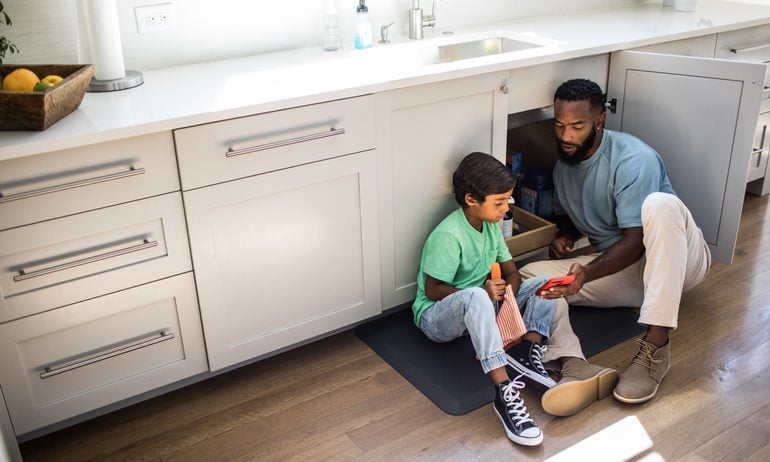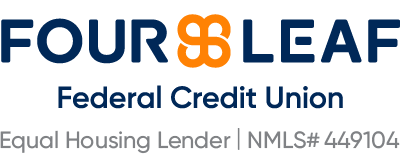As HELOCs Return, Here’s How and Why to Use One
Home equity lines of credit are making a comeback. They're best suited for home renovations and emergency funds.

Some or all of the mortgage lenders featured on our site are advertising partners of NerdWallet, but this does not influence our evaluations, lender star ratings or the order in which lenders are listed on the page. Our opinions are our own. Here is a list of our partners.
People are borrowing from their homes' equity the way they used to — and that's a good thing.
We're talking about home equity lines of credit, or HELOCs. They soared in popularity in the early 2000s, then faded after 2008. In recent years, HELOCs were eclipsed by cash-out refinancing, another method of getting one's hands on equity.
Now, HELOCs are tiptoeing back. The number of HELOCs inched up in the second half of last year. The amount borrowed from HELOCs nosed upward, too: In the fourth quarter of 2022, homeowners owed $336 billion on their HELOC balances, up from $318 billion a year earlier.
HELOC & Home Equity Loans from our partners

on New American Funding
580
$750,000
on New American Funding

on FourLeaf Federal Credit Union
670
$1,000,000
on FourLeaf Federal Credit Union
As HELOCs revive from a lengthy dormant period, a new generation of homeowners is unfamiliar with them and may need some schooling.
What HELOCs are good for
Don't be alarmed by the return of HELOCs. Yes, they sunsetted around the time that subprime mortgages went kablooey. But HELOCs aren't subprime loans, and they're useful for various purposes.
A HELOC is a second mortgage that lets you keep your current home loan. You can borrow from a HELOC and repay some or all of it monthly, like a credit card. HELOCs are traditionally used to pay for home improvements, allowing the owner to increase the home's value by borrowing against its equity. This is a strong motivation nowadays when many homeowners would rather fix up the house and keep its low mortgage rate than sell and buy a nicer home at a higher interest rate — a phenomenon known as the "rate lock-in effect."
Marguerita Cheng, a certified financial planner and CEO of Blue Ocean Global Wealth in Gaithersburg, Maryland, says HELOCs are an excellent way to pay for a series of renovations over time: a bathroom one year, the kitchen the following year. She has clients who draw from a HELOC, "do a project, they pay it down and they use it again. And it's worked out really well for them."
Some people open a HELOC and don't borrow from it, keeping the credit line in reserve for a rainy day.
"I like to think of HELOCs in most cases as a secondary emergency fund," said Tim Melia, a certified financial planner and principal at Embolden Financial Planning in Seattle, in an email. He recommends drawing first from emergency savings and resorting to the HELOC after that account is exhausted.
Questionable uses for HELOCs
The standard advice is to avoid using a HELOC to live large. "Don't do it for consumption, like a new SUV or a trip or like a wedding or something," Cheng says.
What about in-between outlays that aren't as transient as a vacation or as substantial as a renovated bathroom? College expenses, for example, or to consolidate credit card debt? Financial planners don't like to say "never," because everyone's situation is unique, but they're not enthusiastic about those uses.
For college expenses, Melia prefers student loans, which "may have more friendly interest rates or payback options." He acknowledged that using a HELOC to consolidate credit card debt looks attractive, but you need the self-discipline to pay off the debt without running up more charges on the card.
Things to watch out for
Note that when you use a HELOC, you're using your home as collateral. Therefore, you could lose your home in foreclosure if you don't make the payments.
"Borrowing against home equity can have several downsides," Marcus P. Miller, a certified financial planner at Mainstay Capital in Jacksonville, Florida, said in an email. "First, it increases the amount of debt that you have, which can put you at risk of defaulting on your loan or facing financial difficulties if you are unable to make your payments. Second, it can reduce your home equity, which is the amount of your home that you own outright. This can make it more difficult to sell your home or refinance your mortgage in the future."
Several financial planners emphasized that you should know how you'll repay the HELOC balance when you're required to pay principal plus interest. For example, what's your plan if you borrow the money while working and have to repay it in retirement with a reduced income?
Why HELOCs are coming back
Mortgage nerds talk about "tappable equity" — the total amount of home equity that homeowners could qualify to borrow from. Tappable equity swelled in the first two years of the pandemic as home prices went into beast mode. Homeowners had about $9.3 trillion in equity they could borrow from as of February, according to data analytics company Black Knight. That was a $3.4 trillion increase in three years, even as home prices flattened or fell in some areas since the beginning of 2022.
So homeowners have equity to borrow. And with interest rates where they are now, a HELOC usually beats cash-out refinancing.
With a cash-out refinance, you replace your current mortgage with a new home loan for more than you owed. You receive the difference in cash. Cash-out refinances have gone out of style because mortgage rates have increased more than 3 percentage points since the beginning of 2022. Who wants to refinance at a much higher interest rate?
HELOC & Home Equity Loans from our partners

on New American Funding
580
$750,000
on New American Funding

on FourLeaf Federal Credit Union
670
$1,000,000
on FourLeaf Federal Credit Union
Comparing a HELOC and cash-out refi
Take the hypothetical example of someone who got a $300,000 mortgage in the middle of 2021 at a 3% interest rate. Now this homeowner wants to borrow $50,000 from equity. Among the options: Keep the current mortgage and borrow $50,000 from a HELOC, or do a cash-out refinance for $350,000 at today's higher interest rate.
Keeping the mortgage, and adding a $50,000 HELOC with a 9% interest rate, costs $1,898 a month in principal and interest. (This assumes the borrower will pay off the HELOC over 10 years.)
Getting a $350,000 cash-out refinance at 6.5% costs $2,212 in principal and interest. That's $314 a month more out of pocket (not to mention the additional thousands in interest on the original $300,000).
Interest rate | Payment | |
|---|---|---|
$300,000 mortgage | 3%. | $1,265. |
$50,000 HELOC | 9%. | $633. |
Total | $1,898. | |
$350,000 mortgage | 6.5%. | $2,212. |
Even if the rate on the original mortgage were higher — 4% instead of 3% — adding the HELOC would cost $147 a month less than a cash-out refinance in the scenario above.
HELOCs are a valuable financial tool when used responsibly, and their recent revival may be just beginning.
HELOC & Home Equity Loans from our partners

on New American Funding
580
$750,000
on New American Funding

on FourLeaf Federal Credit Union
670
$1,000,000
on FourLeaf Federal Credit Union


